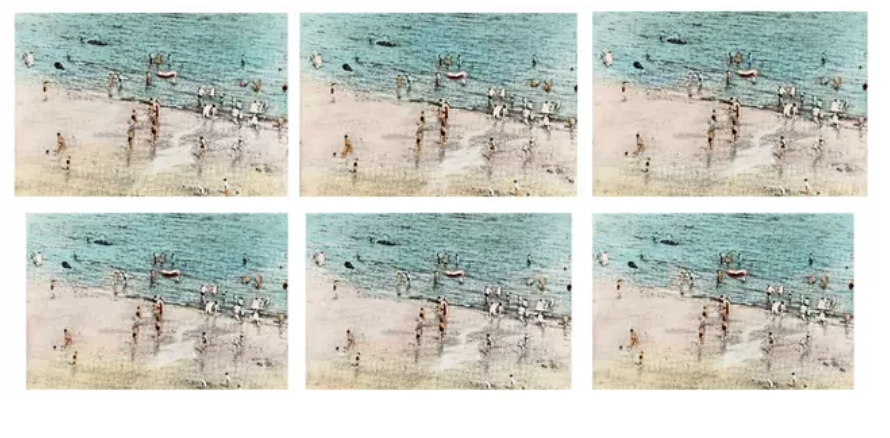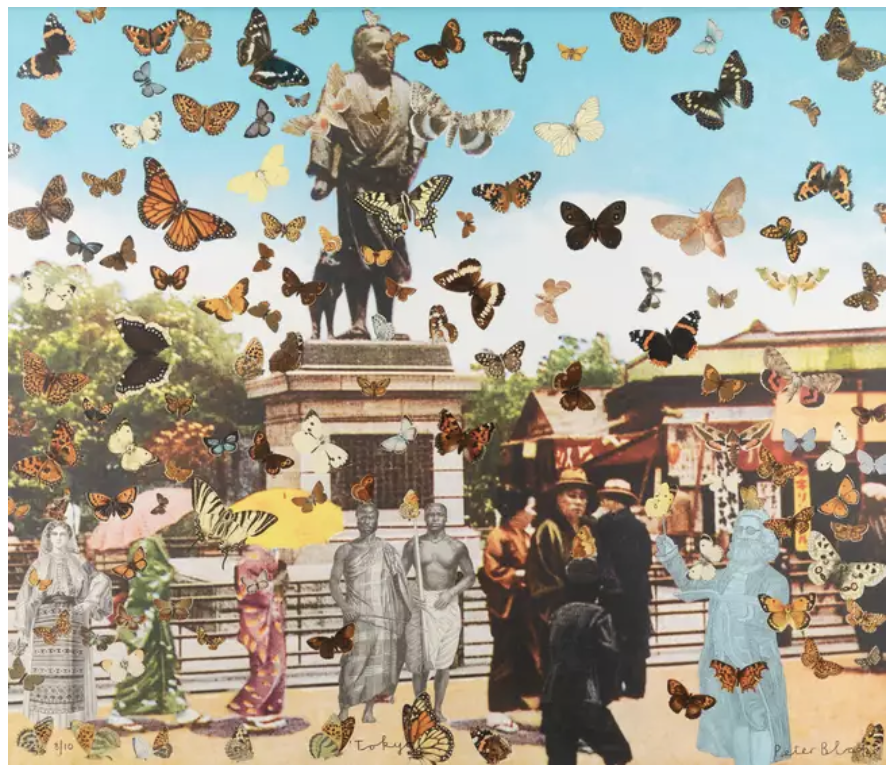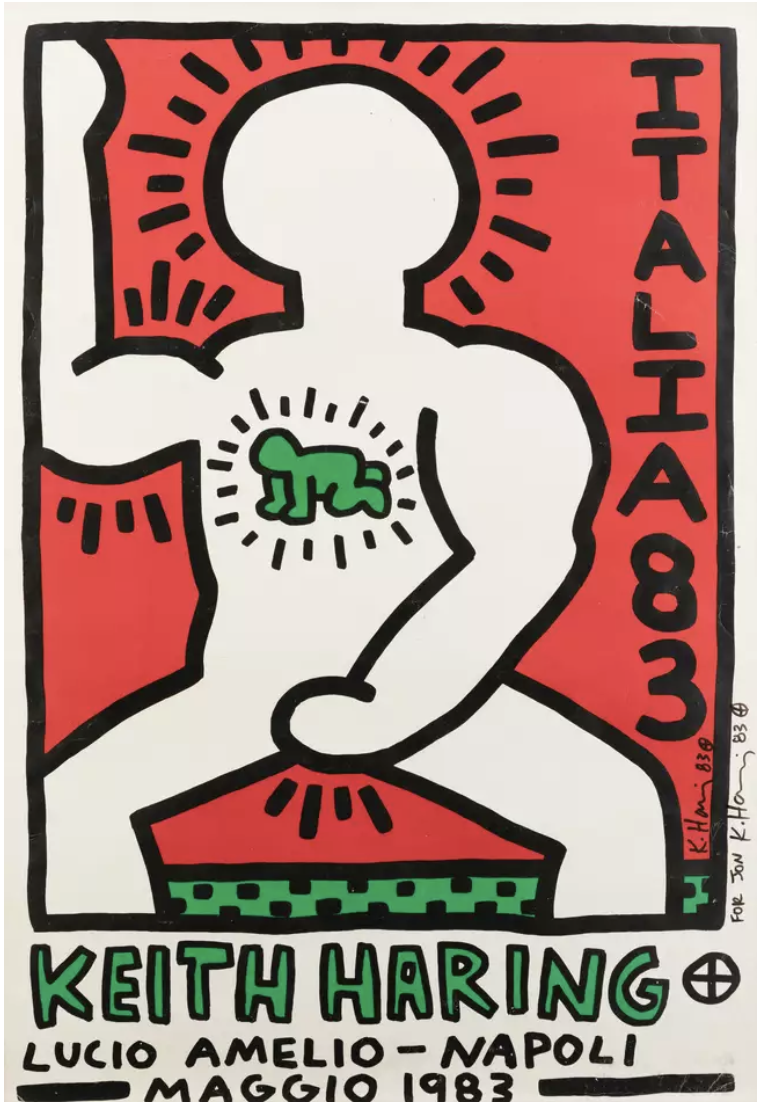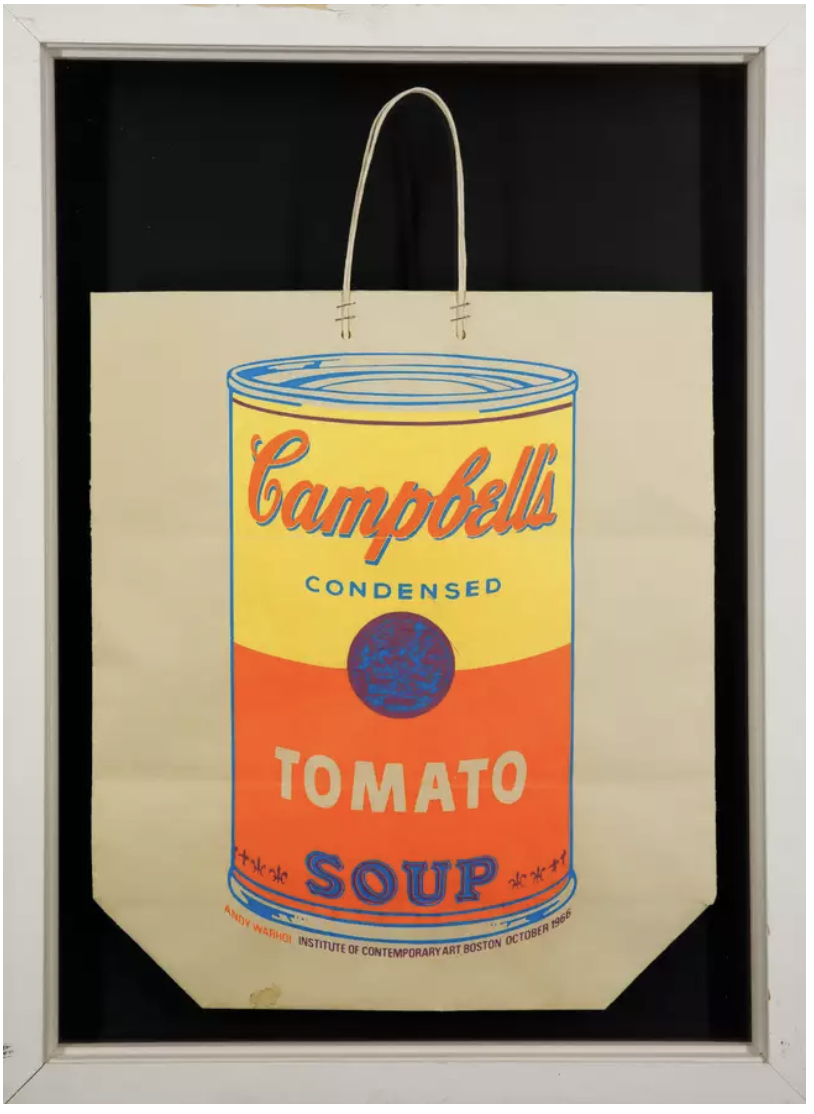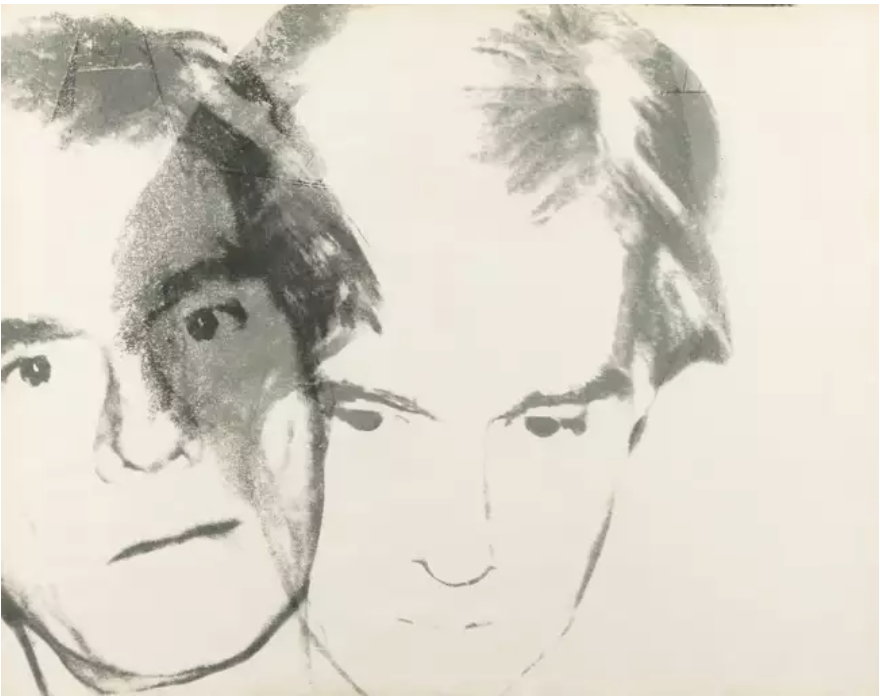Pop Art emerged in the mid-20th Century as a reaction to the culture of consumerism and the standards of modern society. Incorporating imagery from mass media, as well as commonplace objects allowed pop artists to blur the boundary between fine art and everyday life. Whether the aim was to subvert advertising norms through satirical and ironic commentaries, or to embrace celebrity and popular culture, pop art is characterised by the use of bold and striking imagery to create simple yet analytical artworks.
Lot 145 – Richard Hamilton, Whitley Bay [Lullin 61], 1966.
In Britain the emergence of Pop Art was a reaction to the prevalence of American pop culture to which British artists would often adopt more critical or satirical approach. Artists such as Richard Hamilton created irreverent imagery with a focus on collaging, incorporating mass-media imagery to mock the idealised ‘American Dream’. Collaging was a technique championed by many Pop artists, such as British artist Peter Blake who would use this approach in the creation of the iconic album artwork for the Beatle’s eighth studio album ‘Sgt. Pepper's Lonely Hearts Club Band’.
Lot 199 – Peter Blake, Tokyo, 2011.
Visually, Pop art is defined by the use of bold primary colours or a limited colour palette, creating impactful and bold compositions. The hard-edged, arresting imagery used in Pop art makes it particularly recognisable, and many of the most famous Pop artists have created their own distinctive motifs and styles that make their work easily discernible. This characteristic is prevalent in the work of Keith Haring and Roy Lichtenstein, Haring’s chalk outlines and Lichtenstein’s comic strips are instantly recognisable, giving their work a wide spread appeal that has endured to this day.
Lot 342 – Keith Haring, Italia, 1983.
Andy Warhol is synonymous with the Pop Art movement and is one of its most significant American contributors. Warhol’s engagement with commercial imagery, stemming from his background as a commercial illustrator, led him to create some of the most iconic images of the 20th Century. Warhol’s obsession with pop culture characterises his artwork, and his many portraits of celebrities displays his fascination with the superstars of the time. Warhol’s art would catapult him to celebrity status, following the success of his Campbell’s Soup Cans artworks in 1961 and 1962.
Lot 329 – Andy Warhol, Campbell's Soup Can (Tomato), 1966.
Warhol’s ‘Double Self Portrait’ is an imposing unique print that presents a highly contrasting black and white double image of the artist himself. An eye-catching introspective screenprint; this work is typical of Warhol’s Pop Art portraiture and unusual in that it is a double superimposed portrait.
Lot 331: Andy Warhol, Double Self Portrait, circa 1977
The intrinsic link between Pop Art and popular culture has ensured its lasting popularity. Andy Warhol’s ‘Shot Sage Blue Marilyn’ became the 11th most expensive painting ever sold when it sold for $195 million in 2022. Similarly, Roy Lichtenstein’s work remains ever popular, with ‘Masterpiece’ selling for $165 million in January of 2017.


